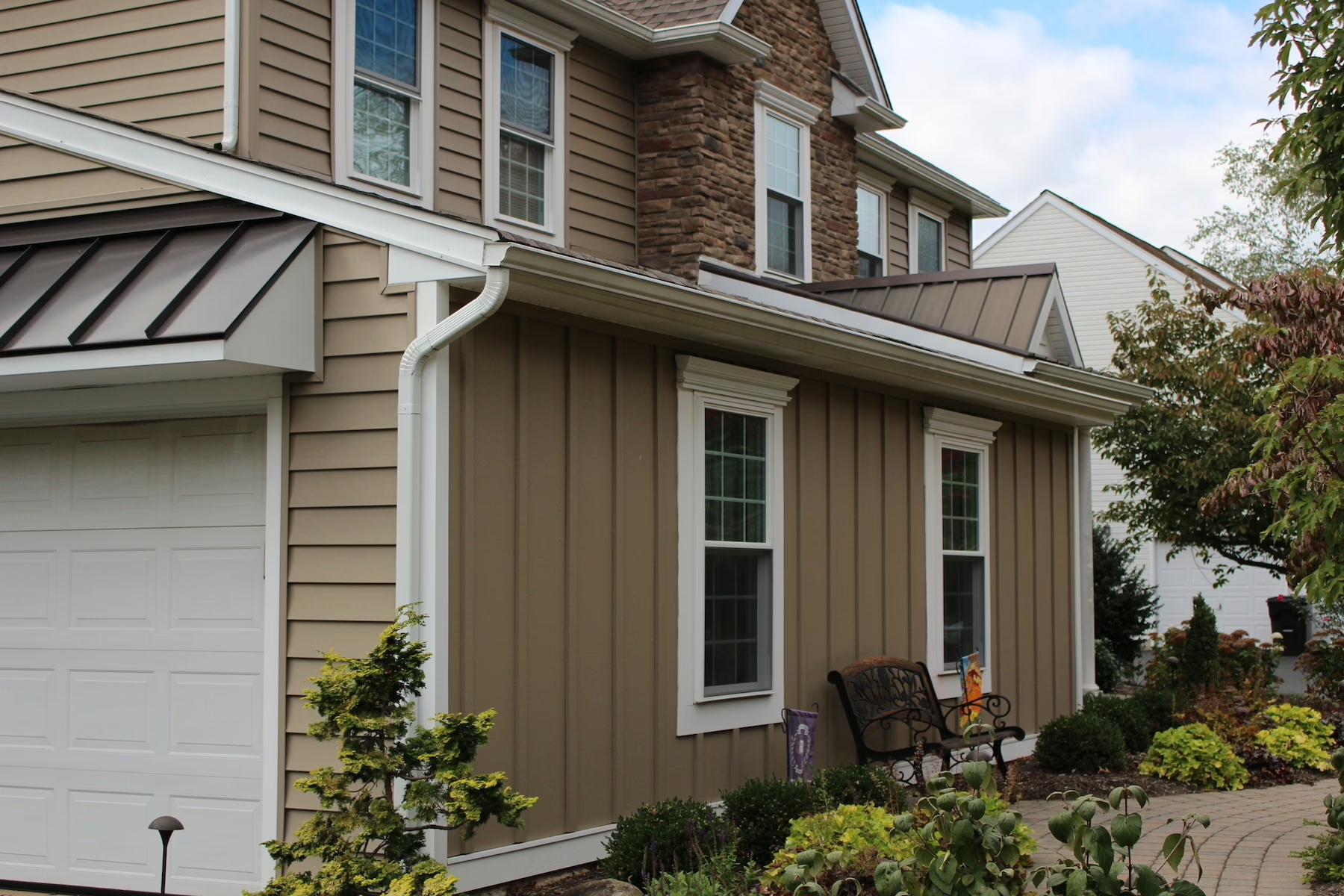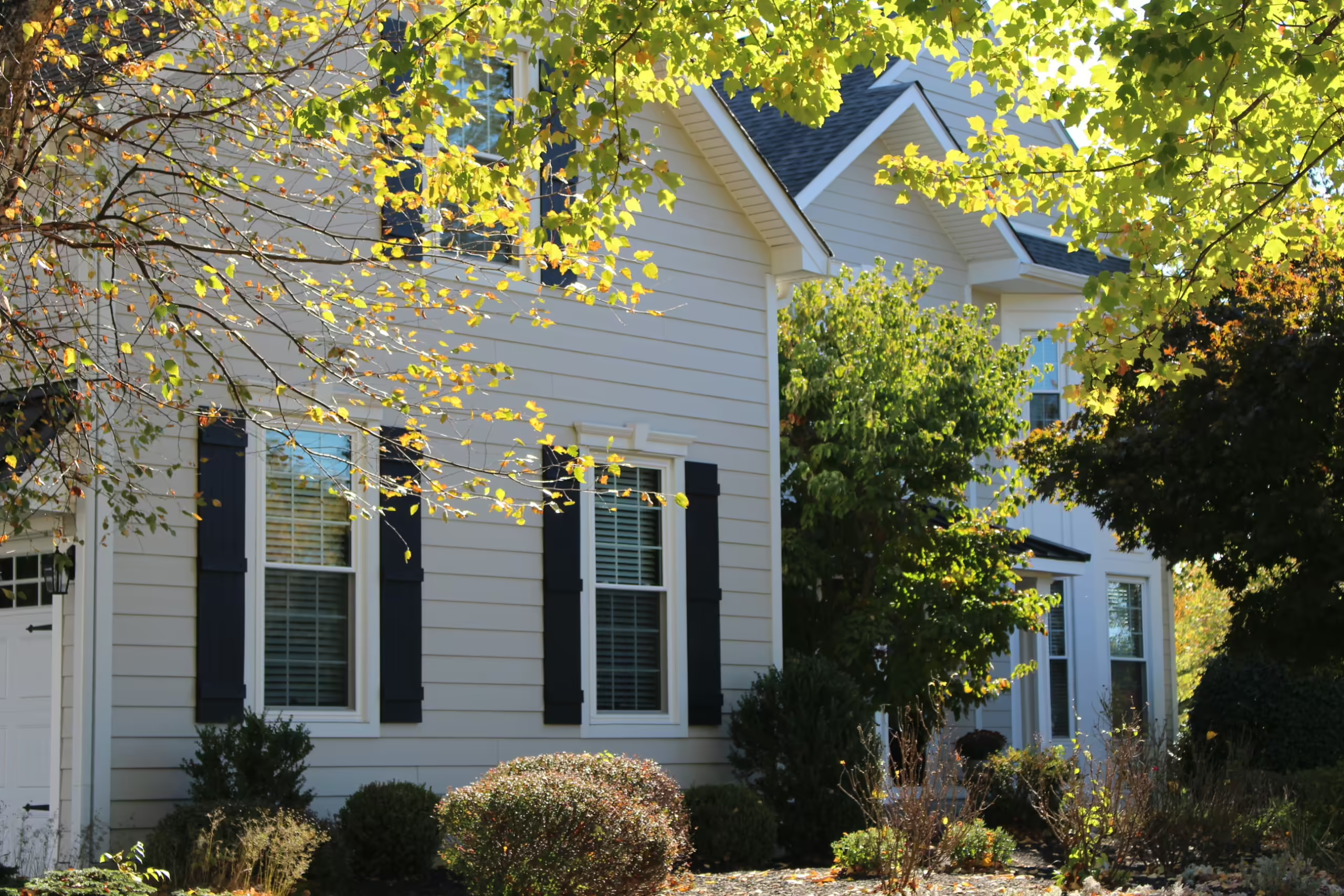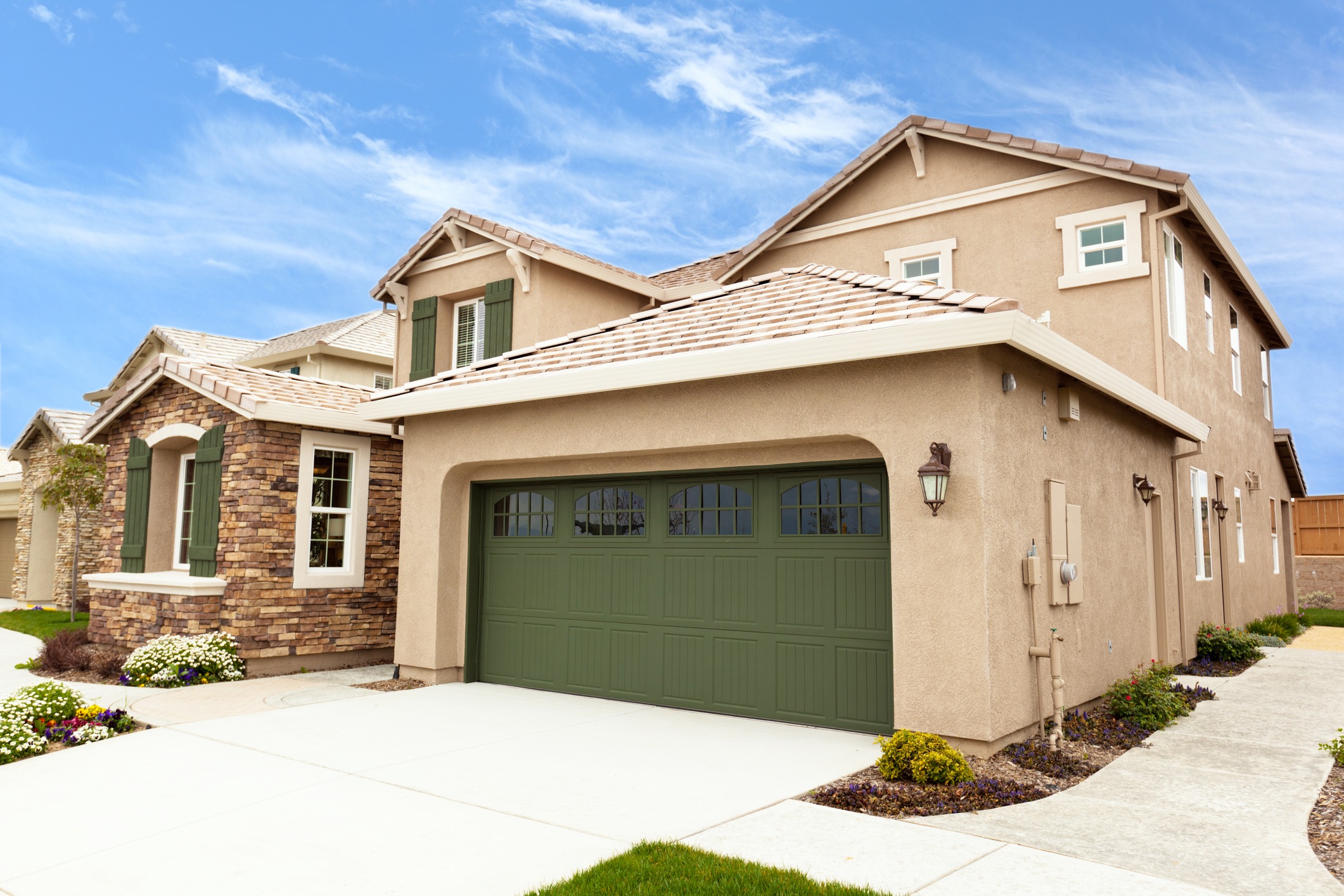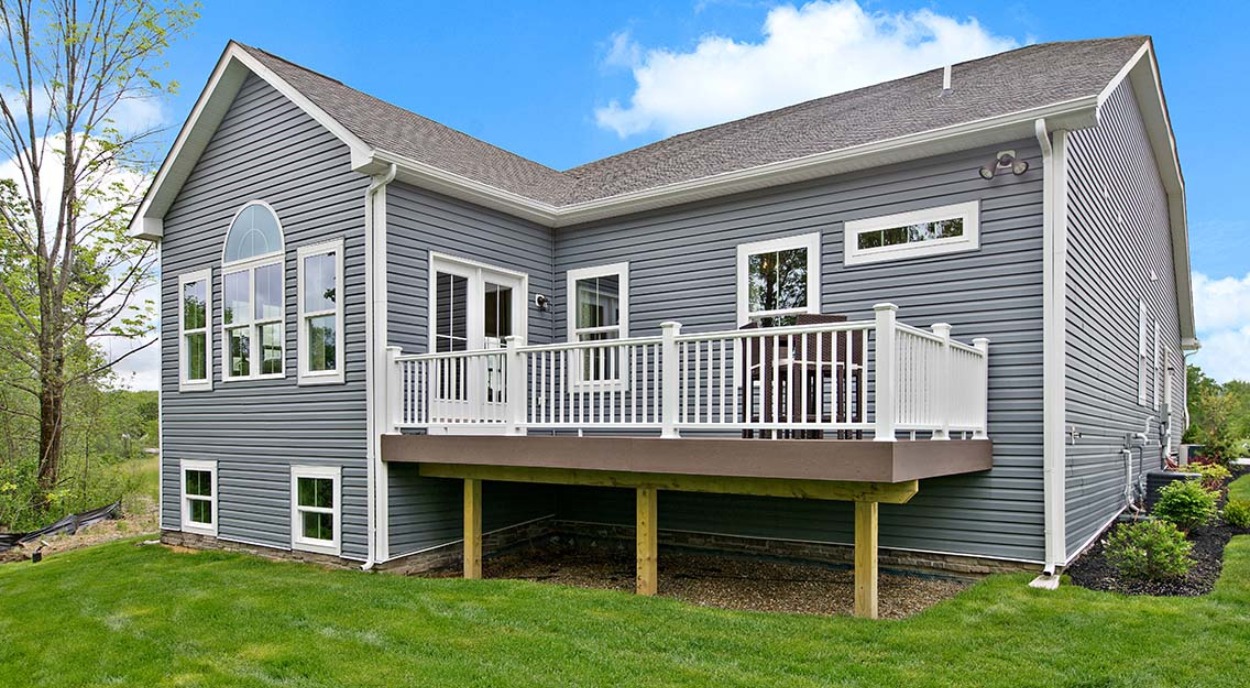Everyone wants a beautiful home.
Unfortunately, getting one takes more than a simple snap of the fingers. Roofing needs to be installed, coats of paint need to be applied, and perhaps most importantly, attractive and durable siding needs to be chosen.
That’s why we’ve put together a definitive guide on choosing the right siding for your home. In this guide, we compare the benefits and costs of fiber cement panels, also called Hardiplank vs vinyl siding. It’s important to consider the appearance and aesthetics, the maintenance, the impact for home resale, and the cost for both types of siding. In the end, we want you to feel confident about choosing the best siding for your home.
Fiber Cement Siding
Fiber Cement Siding is often called “Hardiplank” or even “Hardie board” named from the most popular brand of fiber cement siding which is manufactured by James Hardie. Fiber cement planks are formed by combining wood pulp with Portland cement. As a result, the planks or individual shingles do an excellent job of mimicking the look of traditional wood siding. It is also installed in much the same way as a traditional clapboard or wood siding, as it is nailed directly to your home.
When Vinyl Siding become popular?

Vinyl Siding is an invention of the 20th century. It has become very popular because it is durable, affordable, and quick to install. According to the U.S. Census Bureau, vinyl siding is the most popular home exterior material in America. It was installed on 36% of new homes in 2010. Unlike fiber cement siding, it is not nailed directly to the side of your home. This allows it to expand and contract. This makes it an especially popular material in regions with a wide range of seasonal temperatures.
Which is more energy efficient and eco-friendly?
In its standard form, neither vinyl siding nor fiber cement does much to insulate your home. What they do provide is protection from both weather and critters. Where brick and stucco can crack, well-installed vinyl or Hardiplank siding will keep your home sealed tight.
However, for those who want to increase their home’s energy efficiency, know that there are vinyl siding options that come with a layer of insulation. While most homes in most climates are insulated between their interior and exterior walls, an additional layer between the exterior walls and the siding will greatly increase your home’s insulating ability or r-value.
Keep in mind that this insulated siding will keep warm air inside your home during the winter and keep the heat of the sun outside during the summer. Vinyl siding does absorb heat during the summer, and an insulation layer will prevent that heat from transferring into your home.
If you are the type of green-minded homeowner that also cares about fuel consumption during the transportation of building materials, also know that vinyl siding is incredibly light, meaning getting the siding to your home requires a minimal amount of fossil fuels.
On the other hand, fiber cement is made from more sustainable materials. Because the wood pulp used in the manufacture of fiber cement is made primarily of wood waste, it doesn’t require the harvesting of trees like natural shingles nor the use of fossil fuels like vinyl. Finally, while there are plenty of eco-benefits to vinyl, disposal of used vinyl siding is a big concern. Disposal of fiber cement is much easier on the environment.
Additionally, even perfectly installed vinyl siding is water resistant, not waterproof. While this distinction may not be too big of a deal under most weather conditions, places where wind-driven rain is common — especially hurricane-prone areas — water can find its way behind your vinyl siding, causing some of the same issues mentioned above.
Plus, wind and debris can more easily damage vinyl siding, as vinyl shows impact more easily and can be pulled in sheets off of the side of your home. If you live in warmer, sunnier climates, this weakness can be exacerbated, as sun and heat can make otherwise flexible vinyl more brittle. In fact, in hurricane regions, fiber cement may actually perform better in terms of both water and wind resistance.
Also, if you do suffer weather damage, fiber cement does have the advantage of being easier to repair. If a portion of a vinyl siding panel is damaged, then the whole panel needs to be replaced. However, if the same amount of damage is done to fiber cement siding, you may just need to replace a couple of individual shingles. This is a much smaller job than a whole panel replacement.
In both cases, durability is contingent upon proper installation. While vinyl may be slightly more durable, if installed properly, both hardiplank and vinyl siding are far more durable than natural options.
Which requires more maintenance?
This one is pretty simple. While it requires far less maintenance than natural materials, fiber cement does require more maintenance than vinyl.
To begin with, unless you are opting for the pre-painted version, fiber cement does need to be painted immediately after installation. If you are the kind of homeowner who paints their own house, that is a lot of work. Otherwise, you will be paying someone else to do that work. Either way, it is more involved and/or costly than a vinyl siding insulation.
Is fiber cement siding wearproof?
Additionally, fiber cement does fade over time. While this is not a huge concern — and again less of an issue than if you use natural materials — it does mean that you will need to paint your fiber cement again sometime in the future.
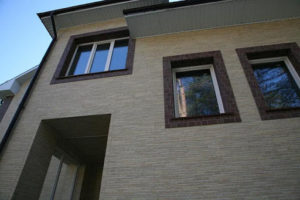
Finally, in order to be water tight, fiber cement siding needs to be caulked. This will need to be redone at some point as your siding wears.
In the case of vinyl siding, other than periodic cleaning and spot repairs in the event of inclement weather, vinyl is very low maintenance. In fact, most years, you will need little more than some soapy water and a garden hose to keep your vinyl siding in like new condition.
Which is more fire resistant, Vinyl siding or fiber cement?
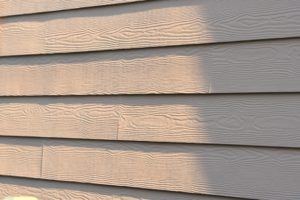
When it comes to such an unfortunate situation as a fire, you want your home to be built with as many flame retardant materials as possible.
In terms of siding, natural wood materials are obviously the most dangerous, so both vinyl and fiber cement are upgrades. However, when compared with each other, fiber cement is definitely more flame retardant than vinyl.
The problem with vinyl is that it melts when exposed to very high temperatures. For example, if you have a home with vinyl siding, it is important that you keep your outdoor grill far from the exterior of your home, as the high temperatures of a grill can cause your siding to melt, warp and even discolor. Even setting a cigarette too close to a vinyl exterior can cause cosmetic damage.
This is a tough question to answer and depends on who you ask. From an initial installation standpoint, vinyl siding is definitely cheaper.
This is due to the fact that vinyl siding is easier to install from a labor stand point and comes pre-painted. If you are paying a contractor to paint your fiber cement, that’s an added cost.
Furthermore, if you do opt for insulated vinyl, you will also be recouping some of that installation cost through future energy savings.
That being said, while data is still hard to come by in terms of resale value, as fiber cement products are still relatively new, there are reasons to expect that fiber cement will do well to recoup costs when a home is put on the market. Because fiber cement looks so natural, it has the ability to elevate the curb appeal of a home. Furthermore, because it can be easily painted in versatile ways — as is common in Victorian-style homes — as a material it can be made to really stand out if your home is on the market.
On the other hand, because there are more long-term maintenance costs associated with fiber cement as opposed to vinyl, it can also be more expensive over the life of the siding installation. That being said, the maintenance costs of fiber cement are significantly lower than the costs of natural wood materials!
Which is best for your home?
If you have decided that fiber cement siding is best for your home, we are a preferred dealer and remodeler for James Hardie products, the leading manufacturer of fiber cement. That means that the company responsible for making the most beautiful and durable fiber cement siding trusts us to install incorrectly.
If instead, you are leaning towards vinyl siding, know that we are Vinyl Siding Institute certified, meaning you can trust us to put your siding on the right so that it gorgeous and long-lasting.
And if you are still trying to make up your mind, we are here to help you weigh your personal pros and cons. Because we have years of experience working with both materials, you can be confident that we will help you come to the decision that makes the most sense for you, your family, and your home!
